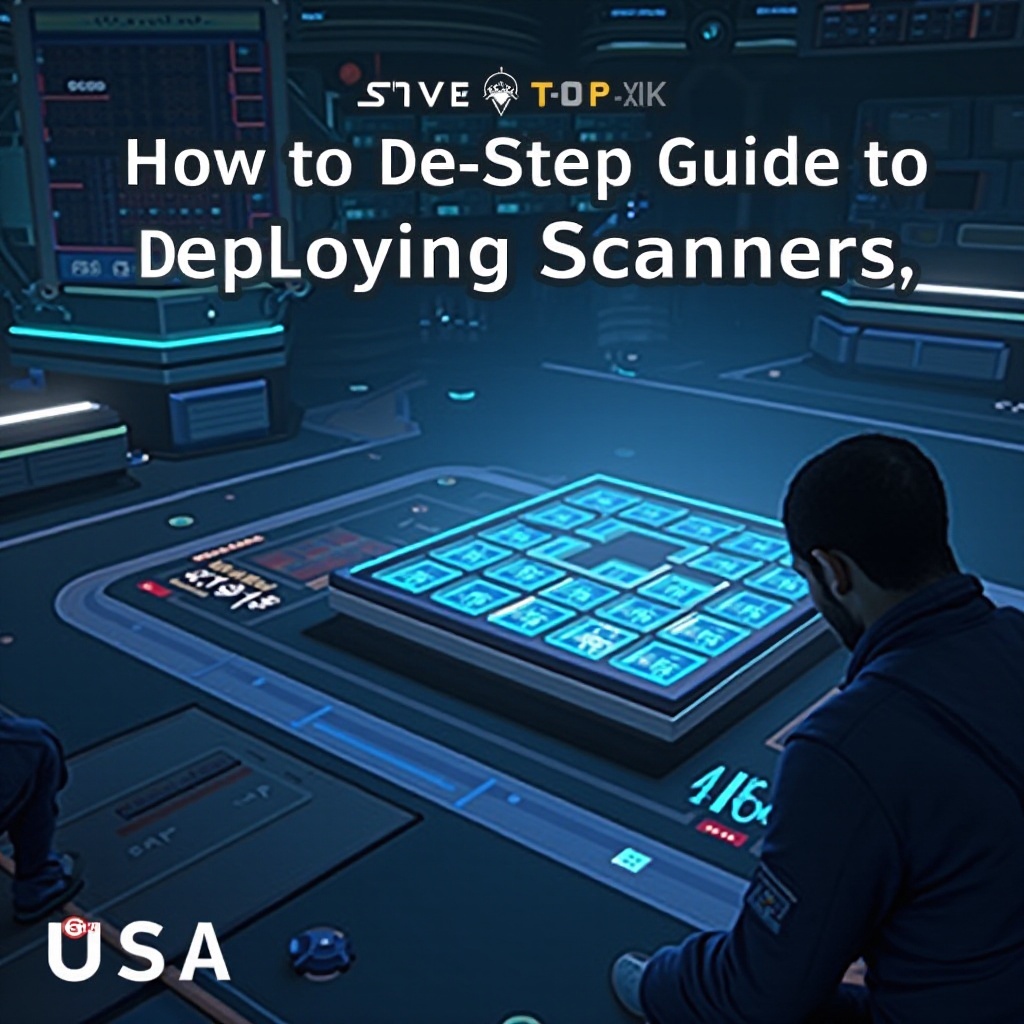Introduction
Deploying scanners in Save the World can significantly enhance mission success by providing critical data and insights. However, understanding the proper setup and deployment process is essential to maximize their effectiveness and ensure smooth operation. This guide will walk you through the necessary steps, offer troubleshooting tips, and highlight best practices for ongoing management.

Understanding the Role of Scanners in Save the World
Scanners serve as vital tools in Save the World missions, providing essential data that helps identify threats, locate resources, and guide strategic decisions. By deploying them effectively, you can gain a better understanding of the mission environment, detect anomalies, and gather real-time information, which is crucial for planning and executing missions successfully.
Scanners can be used in various capacities, from environmental monitoring to threat detection. Their versatility makes them indispensable for different mission types. Knowing when and where to deploy scanners can tilt the balance in favor of mission success, underscoring the importance of understanding their role fully.
Setting Up Your Scanner Deployment Process
Setting up a scanner deployment process involves several key steps to ensure your devices are ready for action. Here’s a structured approach:
- Identify Mission Requirements: Determine the specifics of the mission and what types of data are needed. This step will guide the selection of the appropriate scanner.
- Choose the Right Scanners: Based on the mission requirements, select scanners that offer the necessary capabilities—be it thermal imaging, environmental analysis, or threat detection.
- Ensure Compatibility: Verify that the scanners are compatible with your existing systems and software. Compatibility issues can lead to data loss and operational inefficiencies.
- Prepare Deployment Sites: Identify optimal locations for scanner placement to maximize coverage and effectiveness. Consider factors like line of sight, environmental conditions, and potential obstructions.
- Training: Ensure that the team is adequately trained to operate and troubleshoot the scanners. This involves hands-on practice and detailed instruction manuals.
- Maintenance Check: Perform a thorough check on all scanners before deployment to ensure they are functioning correctly and the batteries are fully charged.

Step-by-Step Guide to Deploying Scanners
To effectively deploy scanners in the field, follow these systematic steps:
- Positioning: Place the scanners in pre-determined locations. Ensure each scanner has a clear line of sight and is positioned to cover critical areas.
- Calibration: Fine-tune the scanners for optimal performance. This may include adjusting settings for different environmental conditions or mission specifics.
- Connecting to Network: Establish a connection between the scanners and your central monitoring system. This may involve Wi-Fi, Bluetooth, or other wireless technologies.
- Initiating Scanners: Turn on the scanners and initiate the start-up protocols. Ensure they are transmitting data back to the central system correctly.
- Monitoring: Observe the data being sent from the scanners in real-time. Check for any anomalies or inconsistencies in the data flow.
- Adjustment: Make any necessary adjustments to scanner positions or settings based on initial data feedback. This ensures the data gathered is accurate and useful.
- Documentation: Document the deployment process, including locations, settings, and any adjustments made. This documentation is useful for future reference and troubleshooting.

Common Challenges and How to Overcome Them
Deploying scanners comes with its own set of challenges. Here’s how to overcome some common issues:
- Interference: Environmental and electronic interference can affect scanner performance. Use shielded cables and place scanners away from potential sources of interference.
- Power Issues: Ensuring that scanners have a reliable power source is crucial. Use battery backups and check connections regularly.
- Data Loss: Prevent data loss by ensuring scanners have sufficient storage and are regularly synced with the central monitoring system.
- Technical Glitches: Regular software updates and maintenance checks can minimize technical glitches. Keep a log of common issues and solutions to expedite troubleshooting.
Best Practices for Ongoing Scanner Management
Continual management of scanners is necessary to maintain their effectiveness over time. Follow these best practices:
- Regular Maintenance: Perform routine checks and maintenance on all scanners. This includes cleaning sensors, updating software, and replacing batteries.
- Data Backup: Regularly back up data collected by scanners to prevent loss and ensure continuous availability for analysis.
- Training Updates: Keep your team’s training up-to-date to handle new equipment, software updates, or changes in deployment protocols.
- Monitor Performance: Use performance analytics to monitor scanner efficacy and make data-driven decisions on upgrades or replacements.
Conclusion
Deploying scanners in Save the World missions is a critical task that, when done correctly, can lead to the success of the mission. By understanding their roles, setting up a systematic deployment process, and adhering to best practices, you can effectively manage scanners and capitalize on the data they provide.
Frequently Asked Questions
What are the Different Types of Scanners Used in Save the World Missions?
Different types of scanners include thermal imaging scanners for detecting heat signatures, environmental scanners for monitoring air quality, and threat detection scanners for identifying hazardous materials or enemy presence.
How Can I Ensure Data Security When Using Scanners?
Ensure data security by using encrypted connections, regularly updating scanner software, and limiting access to authorized personnel. Regular audits and security protocols should be in place.
What Should I Do If My Scanner Faces Technical Issues?
If facing technical issues with a scanner, refer to the device’s troubleshooting manual. Regular maintenance can prevent many issues. If problems persist, contact the manufacturer’s support team for advanced troubleshooting and repairs.

